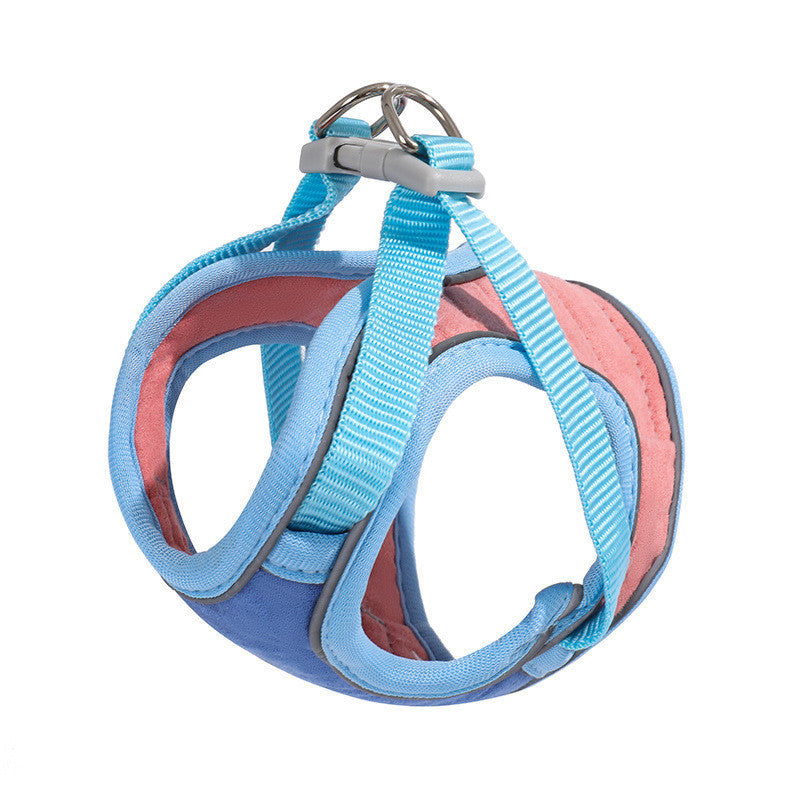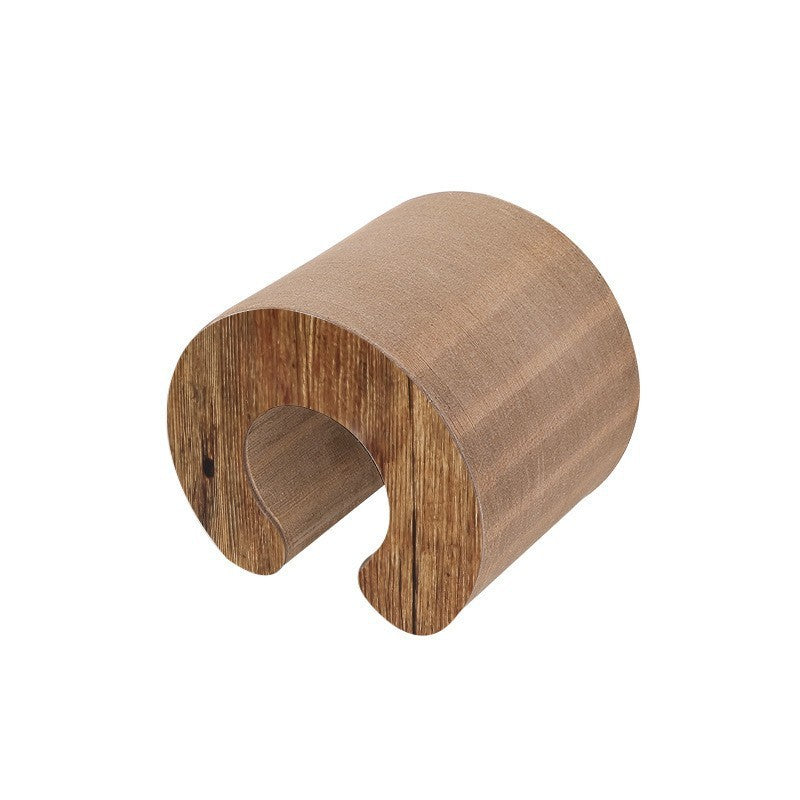The Science Behind Catnip: Why Your Cat Goes Absolutely Mental (And Others Don't Give a Whisker)
Unlock the science behind your cat's reaction to this magical herb.You've seen the videos: one sniff of catnip and your cat goes from calm to chaotic—rolling, drooling, and zooming around like a tiny tornado. Meanwhile, your neighbour's cat takes one look at the green stuff and walks away with the feline equivalent of an eye roll. But why do some cats lose their minds whilst others couldn't care less?
The answer lies in fascinating feline genetics, evolutionary biology, and neurochemistry. Let's dive into the captivating science of catnip, its effects on our beloved moggies, and how to use it safely, plus explore brilliant alternatives for those non-responding cats.
What Is Catnip, Really?
Catnip (Nepeta cataria) is a perennial herb belonging to the mint family, Lamiaceae. Native to Europe and Asia, this unassuming plant has been driving cats wild for centuries. Ancient Egyptians were documented using it to attract cats to temples over 3,000 years ago.The magic lies in nepetalactone, a volatile oil compound found primarily in the leaves and stems. When your cat encounters this chemical, it binds to olfactory receptors in their nose, triggering a cascade of neurological responses that would make any pharmacologist fascinated.
Here's what makes it particularly brilliant: it's completely safe, non-addictive, and the effects naturally wear off after 5–15 minutes. Think of it as nature's safe recreational drug designed specifically for cats.
The Neurochemical Journey
When nepetalactone hits your cat's olfactory system, it travels to the olfactory bulb and then to the amygdala and hypothalamus- brain regions responsible for emotional and behavioural responses. This triggers the release of endorphins and other feel-good chemicals, creating what scientists describe as a temporary euphoric state.Interestingly, the response mimics sexual behaviour, which explains the rolling, rubbing, and vocalising. However, both male and female cats (including desexed ones) respond equally, proving it's not actually sexual, just nature's clever way of hijacking those neural pathways.
Why Do Some Cats React and Others Don't?
The catnip response is one of nature's most interesting examples of genetic inheritance in action. Genetics: It's All in the DNA
Sensitivity to catnip is controlled by a dominant gene, meaning cats need only one copy from either parent to be affected. However, genetics aren't always straightforward, even cats with the sensitivity gene may not respond due to age, health, or environmental factors.
Kittens under three months rarely react because their nervous systems are still developing. Similarly, senior cats (over 10 years) may show reduced sensitivity as their olfactory receptors become less sharp with age.
The Numbers Game
According to research cited by Animal Medicines Australia, approximately 50–70% of cats are genetically predisposed to react to catnip. This percentage varies by breed and geographic region:
- European breeds tend to have higher sensitivity rates (up to 80%)
- Asian breeds, particularly those from regions where catnip doesn't naturally grow, show lower sensitivity (around 30–40%)
- Mixed-breed moggies fall somewhere in the middle
If your cat is amongst the 30–50% of non-responders, don't worry. They're not broken! These cats simply lack the genetic lottery ticket for catnip sensitivity. It doesn't affect their quality of life, intelligence, or ability to be utterly adorable in other ways.
What Happens When Cats Encounter Catnip?
The catnip experience typically unfolds in predictable stages, creating what researchers call the "catnip response cycle." Phase 1: Initial Contact (0-2 minutes)
Your cat approaches cautiously, sniffing and investigating. You might notice their pupils dilating slightly as the nepetalactone begins its work.
Phase 2: The Response (2-10 minutes)
This is where the magic happens. Common behaviours include:
- Rolling and rubbing: Cats frantically rub against catnip-infused items, trying to transfer as much scent as possible to their fur
- Chin and cheek scratching: These areas have scent glands, so cats are essentially "marking" themselves with the catnip scent
- Vocalising: Meowing, purring, or chattering as endorphins flood their system
- Hyperactivity or "zoomies": Sudden bursts of energy, running, jumping, and generally acting like they've had too much coffee
- Drooling: A sign of intense pleasure and relaxation
- Temporary zoning out: Some cats become contemplative, staring into space as if pondering the mysteries of the universe
After the initial high, cats enter a refractory period where they become temporarily immune to catnip's effects. This natural mechanism prevents overstimulation and allows their system to reset.
The Eating Effect
When cats consume catnip rather than simply inhaling it, the response changes dramatically. Eating catnip typically produces a sedative effect, causing cats to become mellow and relaxed, quite the opposite of the inhalation response. This dual nature makes catnip a versatile tool for both playtime excitement and bedtime calm.
Brilliant Alternatives for Non-Responders
Don't despair if your cat turns their nose up at catnip! Mother Nature has provided several other plants that can trigger similar responses in our feline friends. Silver Vine (Actinidia polygama)
This Japanese plant is the superstar of cat stimulants. Research shows that up to 80% of cats react to silver vine, often more intensely than they do to catnip. Even many catnip non-responders go absolutely barmy for silver vine. It contains multiple active compounds, including actinidine and dihydroactinidiolide, which target different receptors than nepetalactone.
Tatarian Honeysuckle (Lonicera tatarica)
Particularly effective with older cats, this wood produces a sweet, honey-like scent that many felines find irresistible. Unlike catnip's energising effect, honeysuckle tends to have a more calming influence, making it perfect for anxious or stressed cats.
Valerian Root (Valeriana officinalis)
With its distinctive earthy, musky scent, valerian root appeals to cats' hunting instincts—the smell apparently mimics prey pheromones. About 50% of cats respond to valerian, and it's particularly popular with cats who enjoy more subdued stimulation.
Matatabi (Japanese Catnip)
Another silver vine variety that's gaining popularity amongst Australian cat owners. Matatabi sticks can be given as natural dental chews whilst providing the same euphoric effects.
These alternatives are readily available at major Australian pet retailers like Petbarn, Pet Circle, and Zoolove, both online and in-store. Look for them in sprays, dried form, or infused into toys and scratching posts.
How to Use Catnip Safely and Effectively
While catnip is remarkably safe, using it properly ensures your cat gets maximum enjoyment whilst avoiding any potential issues. Frequency Matters
The golden rule: less is more. Use catnip sparingly. Once or twice a week maximum. Overexposure can lead to habituation, where cats become less responsive over time. Think of it as a special treat rather than a daily occurrence.
Storage and Potency
- Store dried catnip in an airtight container in a cool, dark place
- Fresh catnip is most potent. If you're growing your own, harvest just before use
- Frozen catnip retains more oils than dried and can be even more effective
- Replace old catnip every 6-12 months as potency diminishes over time
- Sprinkle method: Lightly dust scratching posts, cat trees, or designated play areas
- Toy stuffing: Refresh old toys by adding a pinch of dried catnip inside
- Spray application: Catnip sprays are convenient but often less potent than dried forms
- Fresh leaves: If growing your own, crush fresh leaves gently to release oils
- Avoid during meals: Never use catnip near food or water bowls—the excitement can lead to choking or mess
- Pregnant cats: Whilst not harmful, it's best to avoid catnip during pregnancy as it may cause unnecessary stress
- Anxious cats: Some nervous cats may become overstimulated; monitor their response carefully
- Multi-cat households: Introduce catnip one cat at a time to prevent territorial disputes over the "good stuff"
The Evolutionary Advantage: Why Cats Love These Plants
From an evolutionary perspective, the attraction to catnip and similar plants likely served practical purposes. Many of these plants have natural insect-repelling properties. Cats rolling in them would coat their fur with natural pest deterrents. Some researchers theorise that this behaviour helped wild cats protect themselves from mosquitoes, fleas, and other parasites.Additionally, the euphoric response may have encouraged cats to seek out these beneficial plants, ensuring they received protection from biting insects whilst simultaneously getting a mood boost.
Growing Your Own Catnip in Australia
Australian gardeners can easily cultivate catnip at home, providing a fresh supply for their feline friends whilst enjoying a lovely aromatic herb in the garden. Climate Considerations
Catnip thrives in Australia's temperate regions but can struggle in tropical climates. It prefers:
- Full sun to partial shade
- Well-draining soil with good organic content
- Regular watering during dry spells
- Cool winters for optimal growth
Planting Tips
- Best time to plant: Autumn or early spring in most Australian climates
- Container growing: Perfect for renters or those wanting to control spread
- Companion planting: Grows well alongside other herbs like rosemary and thyme
- Harvest timing: Pick leaves just before flowering for maximum potency
Protecting Your Crop
Here's the catch: if your cat responds to catnip, you'll need to protect your plants! Consider:
- Elevated planters or hanging baskets
- Protective caging until plants are established
- Growing in a greenhouse or enclosed area
- Planting decoy areas with less valuable plants
Beyond the Fun: Practical Uses for Catnip
Catnip isn't just about entertainment. It can be a valuable tool for addressing common cat behavioural challenges. Training Aid
Use catnip to encourage positive behaviours:
- Sprinkle on new scratching posts to attract use
- Apply to carrier crates to reduce travel anxiety
- Use on cat beds to encourage sleeping in designated areas
For cats that respond positively, catnip can provide natural stress relief during:
- House moves or renovations
- Introduction of new pets
- Vet visits (applied to carriers beforehand)
- Thunderstorms or fireworks
Indoor cats, particularly those carrying extra weight, can benefit from catnip-induced play sessions. The 10-15 minute burst of activity provides excellent exercise and mental stimulation.
The Global Catnip Phenomenon
Cats aren't the only animals affected by these plants. Tigers, lions, leopards, and lynxes all show similar responses to catnip, suggesting this sensitivity evolved early in feline evolution. However, domestic cats seem to have the strongest response, possibly due to selective breeding over thousands of years.Interestingly, humans have used catnip medicinally for centuries. Before tea became popular, catnip tea was consumed for its mild sedative properties (though it's far more entertaining to give it to cats than to drink it yourself!).
Catnip Myths Debunked
Myth: Catnip is like marijuana for cats.Truth: While both can cause behavioural changes, the mechanisms are completely different. Catnip doesn't impair cognitive function or coordination like THC does.
Myth: Cats can become addicted to catnip.
Truth: There's no evidence of physical dependence. Cats naturally self-regulate and will walk away when they've had enough.
Myth: Catnip makes cats aggressive.
Truth: True aggression is rare. What looks like "crazy" behaviour is actually playful euphoria.
Final Thoughts: Embracing Your Cat's Unique Response
Whether your cat goes absolutely mental for catnip or treats it with complete indifference, remember that both responses are perfectly normal. Catnip sensitivity doesn't determine your cat's personality, intelligence, or capacity for joy. It's simply one small piece of their genetic puzzle.For the lucky cats who do respond, catnip offers a safe, natural way to provide enrichment and entertainment. For non-responders, the world of alternative herbs opens up exciting possibilities for discovery.
The next time you watch your cat experience their catnip bliss (or dignified indifference), you'll appreciate the complex biology behind their response. After all, it's not magic. It's evolution, genetics, and neurochemistry working together to create those delightfully bonkers moments that make cat ownership such a joy.
Remember to source your catnip and alternatives from reputable Australian pet retailers who understand our unique climate and import regulations. Your cat's safety and enjoyment are always worth the investment in quality products.
Frequently Asked Questions
Q: Is catnip safe for kittens?A: Absolutely safe, but most won't react until they're 3–6 months old when their nervous systems mature. Young kittens may show mild interest but rarely the full euphoric response.
Q: Can cats overdose on catnip?
A: No, it's completely non-toxic and non-addictive. Cats have an impressive ability to self-regulate—they'll naturally walk away when they've had enough, usually after 10-15 minutes.
Q: Why does my cat eat catnip instead of sniffing it?
A: Both behaviours are normal but produce different effects. Sniffing triggers excitement and hyperactivity, whilst eating causes drowsiness and relaxation. Some cats prefer one method over the other.
Q: Can I grow catnip at home in Australia?
A: Yes! Catnip grows beautifully in most Australian climates, particularly in temperate regions. Plant in autumn or spring, provide good drainage, and protect from your cat until it's established. Container growing works brilliantly for apartment dwellers.
Q: Are there any side effects I should watch for?
A: Side effects are rare and mild. Occasionally, cats may vomit if they consume large quantities—similar to eating grass. If your cat seems overstimulated or distressed, simply remove the catnip and they'll return to normal within minutes.
Q: How can I tell if my catnip is still potent?
A: Fresh, potent catnip should have a strong, distinctive smell that's immediately noticeable to humans. If it smells weak or musty, it's time for a replacement. Store-bought catnip typically maintains potency for 6-12 months when stored properly.
Q: Is organic catnip worth the extra cost?
A: Organic catnip ensures no pesticides or chemicals that might irritate sensitive cats. Given that cats roll in and sometimes eat catnip, many Australian pet owners find the peace of mind worth the modest price difference.
Q: Can I use catnip to help with behavioural problems?
A: Catnip can be helpful for encouraging positive behaviours (like using scratching posts) and providing stress relief, but it's not a cure-all. For serious behavioural issues, consult with your veterinarian or a certified cat behaviourist.


















































































